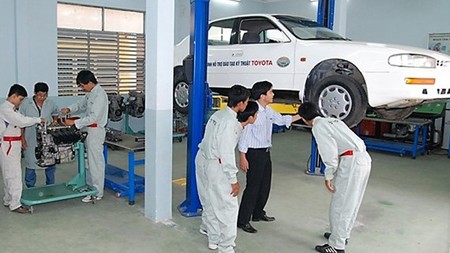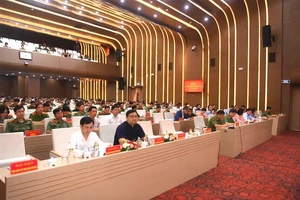
According to Associate Professor cum Doctor Nguyen Duc Minh, Principal of the Ho Chi Minh City (HCMC) College for Foreign Economic Relations, his school this year selected earners based on results of the national high school graduation examination. Having a total from 12 – 14 points, 3,320 people out of 9,000 were accepted into this college. The recruitment process ended on August 9 without additional turns.
Other vocational colleges in HCMC like Dai Viet Saigon College, the HCMC International College, the HCMC Industry and Trade College, the Thu Duc College of Technology, the Cao Thang Technical College, Ly Tu Trong College, and the HCMC Vocational College also had very unexpected impressive recruitment results thanks to their focus on training quality and a guarantee on future job positions.
Unfortunately, their counterparts in the southwest, central, or western highland regions do not have such a blissful result. Many colleges reported that despite using all recruitment methods based on results of academic reports or the national high school graduation examination, they can only reach 20 – 40 percent of their target.
This is because vocational education in Vietnam at the moment still possesses may drawbacks.
As said by Dr. Nguyen Duc Minh, except for prestigious high-quality colleges in major cities like HCMC or Hanoi, other vocational schools cannot attract enough learners. The main reason of this negative state is that the training quality cannot meet the demands of the reality. Therefore, feeling bored with classes, existing learners quit in hope that they can enter university the following year.
What is more, these schools still operate bureaucratically, and do not pay much attention to marketing their own image or create cooperative relationships with businesses to find job opportunities for their students.
One very important cause is the norm of the public in Vietnam since they do not highly appreciate further learning compared to higher education.
The last and sensitive reason is that certain registered students only accept this choice to avoid entering military service. As a result, it is easy for them to drop out next year.
All have lead to the urgent request of a practical solution. It is high time that vocational training institutes be better organized. It is also a reasonable idea to give them autonomy. Private education should be encouraged in this field to help the government. Yet the most important action must be to carefully plan vocational training so that they key industry of each region can have enough human resources while high-tech aspects are better invested, as suggested by Dr. Hoang Ngoc Vinh. former head of the Education department of the Ministry of Education and Training.
























